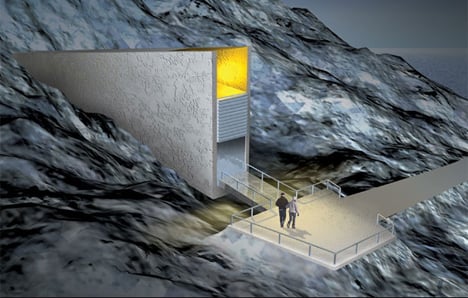We have learned global warming is a myth, a cash cow for the greedy, but the current warming trend is real and extremely dangerous. This warming trend has very little to do with pollution, just as 9/11 had very little to do with Iraq. One of the great lies of the global warming regime is their claim so-called global warming is "preventable". This is a LIE. There is no prevention. However, there is hope and time for "preparedness".
"First of all, I don't think it's within the power of human beings to assure that the climate does not change, as millions of years of history have shown, and second of all, I guess I would ask which human beings - where and when - are to be accorded the privilege of deciding that this particular climate that we have right here today, right now is the best climate for all other human beings." (Michael Griffin - NASA's Chief Administrator)
As we also learned, mass migration is "imminent" and the IPCC knew this the whole time, yet continued attempting to convince you --- if you just cut back on your pollution all will be well.
Given the fact that there is "no prevention", what about "preparedness"? In the book "Global Warming - A Convenient Disguise", you will see the hope which is still available to us all. I cover the many options which are available for preservation and sustainable communities.
I am hopeful this book will help ignite a new paradigm of thinking, and will stop the waste of billions of dollars to the lie of "prevention" which does nothing but line the pockets of the greedy.
We have the money and resources if we spend wisely and in the right direction. So let's make it happen.
 A stunning sequel to the classic 1973 book Shelter, Home Work illustrates even more imaginative ways to put a roof over one’s head, some of which were inspired by Shelter itself. Home Work showcases the ultimate in human ingenuity, building construction, and an independent lifestyle.
A stunning sequel to the classic 1973 book Shelter, Home Work illustrates even more imaginative ways to put a roof over one’s head, some of which were inspired by Shelter itself. Home Work showcases the ultimate in human ingenuity, building construction, and an independent lifestyle.




 From:
From: 
 The main ice covered landmass is Antarctica at the South Pole, with about 90 percent of the world's ice (and 70 percent of its fresh water). Antarctica is covered with ice an average of 2,133 metres (7,000 feet) thick, and in many places thickness exceeds 4,000 metres (13,123 feet), reaching a maximum of 4,800 metres(15,748 feet).
The main ice covered landmass is Antarctica at the South Pole, with about 90 percent of the world's ice (and 70 percent of its fresh water). Antarctica is covered with ice an average of 2,133 metres (7,000 feet) thick, and in many places thickness exceeds 4,000 metres (13,123 feet), reaching a maximum of 4,800 metres(15,748 feet).

